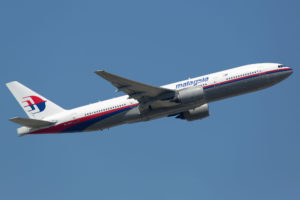
Malaysia Airlines Boeing 777-200ER
How to carry out an Emergency Descent?
Praveen from Quora asks if a quick descent is needed, how pilots do it?
On a single-engine plane flying below 10,000 feet, the pilot retards the throttle and pushes his flight control forward. That’s how it is done.
Unlike a car that can turn left and right, this third dimensional motion differentiates a plane from a car.
Sheeeezz… a hissing sound at the cabin door and the popping of the ears are the indications of a loss of pressurization. After reconfirming with instruments and the alarm bell, the captain will call for a quick or emergency descent.
Emergency descent is one of the memory items that every commercial pilot needs to master.
On 8 March 2014, a Malaysian Airline Boeing 777 on flight MH 370 flew from Kuala Lumpur to Beijing. About 38 minutes after taking off, it reached the initial cruising height of 35,000 feet
After the airplane made its report near the start of Vietnamese air-traffic area, the controller at Kuala Lumpur Centre radioed, “Malaysian three-seven-zero, contact Ho Chi Minh one-two-zero-decimal-nine. Good night.”
The captain answered, “Good night. Malaysian three-seven-zero.” He did not read back the frequency, as he should have.
There were many conspiracy theories on how the plane went missing but for discussion purpose, I will review a hypothetical scenario on a rapid cabin depressurization.
To handle this emergency, pilots fall back to their basic mantra – aviate, navigate, communicate and manage.
The first action of the pilot is to don the oxygen mask and turn 45 degrees away or else he may collide with a reciprocal traffic.
At 35,000 feet, he has only about 30 seconds to stay conscious.
As such, he must set the target altitude to 10,000 feet where oxygen is no longer required. He then presses a button to initiate the descent on auto pilot.
This is recommended in case the pilot becomes unconscious, the plane will automatically level off at this safe height.
This is the ‘aviate’ (flying the plane correctly) part he must never forget.
The next is ‘navigate’, – to proceed to the nearest airport. In MH 370, it was shown that the captain actually turned left towards Langkawi or Penang as the most suitable airfields to divert to.
The third part is to ‘communicate’ to the air traffic control the nature of the emergency.
For example, the captain would call out, “Mayday, Mayday, Mayday, Malaysian 370, emergency descent to 10,000, standby for further instructions!”
Time permitting, he may provide further information such as the weather condition; pilot’s intentions; its position and heading; altitude; fuel remaining; etc.
Finally, in the ‘manage’ phase, the captain is to ensure the passengers are attended to; whether there are any injuries and to liaise with the ground for ambulance services, etc.
Hope this answer helps to clarify how an airline pilot carry out a quick descent if he needs to do so.
See video on Emergency (Rapid) Descent https://m.youtube.com/watch?v=4EaQLca9rJY